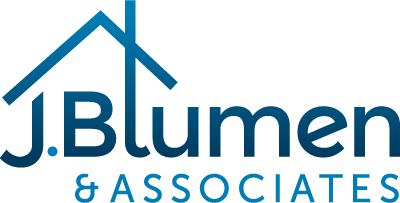
Should You Waive Your Financing Contingency?
Shopping for a home? Get ready to deal with a market where Sellers are calling the shots — and have their pick from multiple and increasingly competitive offers.
No one likes to lose a bidding war. But sometimes offering to pay more isn’t possible. The good news is that there are other ways to make your offer stand out from the competition.
One common offer strategy is to waive your financing contingency. But you’d better know what you’re doing. In the heat of a bidding war, the fear of missing out can drive otherwise reasonable people to make impulsive decisions that can have serious consequences.
Does waiving your financing contingency make sense for you? Here’s what you need to know and what to watch out for.
What Does It Mean?
The financing contingency protects the Buyer from losing their down payment deposit if their lender does not come through with the financing. It’s a standard feature in most Offers and Purchase and Sales Agreements. Think of it as a safety net for your deposit.
How it works: Your Offer to Purchase is contingent on your lender’s written commitment to give you a mortgage by a specific date. If your mortgage is not approved for the amount of financing you need, the Seller agrees to refund your deposit in full. In other words, if you make a $75,000 down payment, and the bank says “no” out, you can walk away with your $75,000.
When you waive your financing contingency, you’re forfeiting your deposit to the Seller if your lender backs out. In other words, you’re walking a tight rope without a net.
What Can Go Wrong?
The standard financing contingency means that if the Buyer’s financing falls through, the Seller is left with nothing but wasted time and opportunity. Waiving your mortgage contingency reverses this dynamic. Now you’re assuming all the risk — and the Seller keeps the house and your deposit.
Losing your deposit is the most obvious pitfall of waiving your financing contingency. But it’s not the only one. This strategy can also cost you a lot more money if the lender’s appraisal comes in lower than expected.
Let’s say the lender has pre-approved your purchase of a home for $1,000,000. Assuming you make a down payment of 20% or $200,000, the lender will finance the remaining 80% or $800,000.
Your financing may be pre-approved — which helps support the strength of your offer — but it is not guaranteed unless the lender’s appraisal verifies the valuation. Because the lender wants to make sure that the asset they are investing in is worth their lending risk.
If the appraiser’s valuation satisfies the lender’s tolerance for risk, you’ve got the loan. But if the appraisal falls short of the purchase price, you’ve got a problem. Here’s why:
When an appraisal comes in low, the lender moves to reduce their risk. If the numbers are too far apart, the lender may deny financing altogether, sending you into a desperate frenzy to find financing before the deadline — and leaving your $200,000 deposit hanging by a thread.
The more typical scenario, however, is that the appraisal is lower, but not so much that the lender pulls financing altogether. Instead, the lender is likely to reduce their risk by (a) reducing the amount of financing they are willing to extend; (b) increasing the interest rate; or (c) both of the above.
All of which means you are going to pay a lot more for the property than you planned.
First, you will have to come up with more cash to cover a larger down payment. For example, if the appraisal comes in at $900,000, your lender will only finance 80% of $900,000, or $720,000. That leaves you to cover the down payment gap between the purchase price ($1,000,000) and your financing ($720,000), which is now $280,000.
If your lender also bumps up your interest rate, you can also count on higher monthly payments for the life of your mortgage.
That’s what can happen when you waive your financing contingency. It’s not hypothetical. I’ve seen it. And it’s not pretty.
How to Minimize Your Risk
Having said that, in sea of competitive offers, waiving your financing contingency can be effective. Here are some tips to help minimize your risk:
- Have a long talk with your loan officer. Make sure you have a very clear picture of your finances, including your credit score.
- Have enough money in reserve. If your credit score dips or you deplete your cash assets between the time you apply for the loan and your closing, that’s enough to get you rejected for a loan.
- Listen to your loan officer. They’ll tell you not to buy or charge anything until closing – and definitely don’t open up a new credit card.
Buying a home in Massachusetts? Get the legal help you need. For more information, contact J.Blumen & Associates 781-784-2500.
